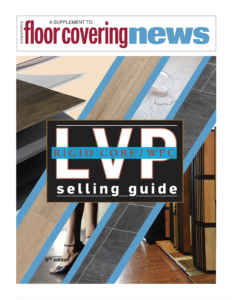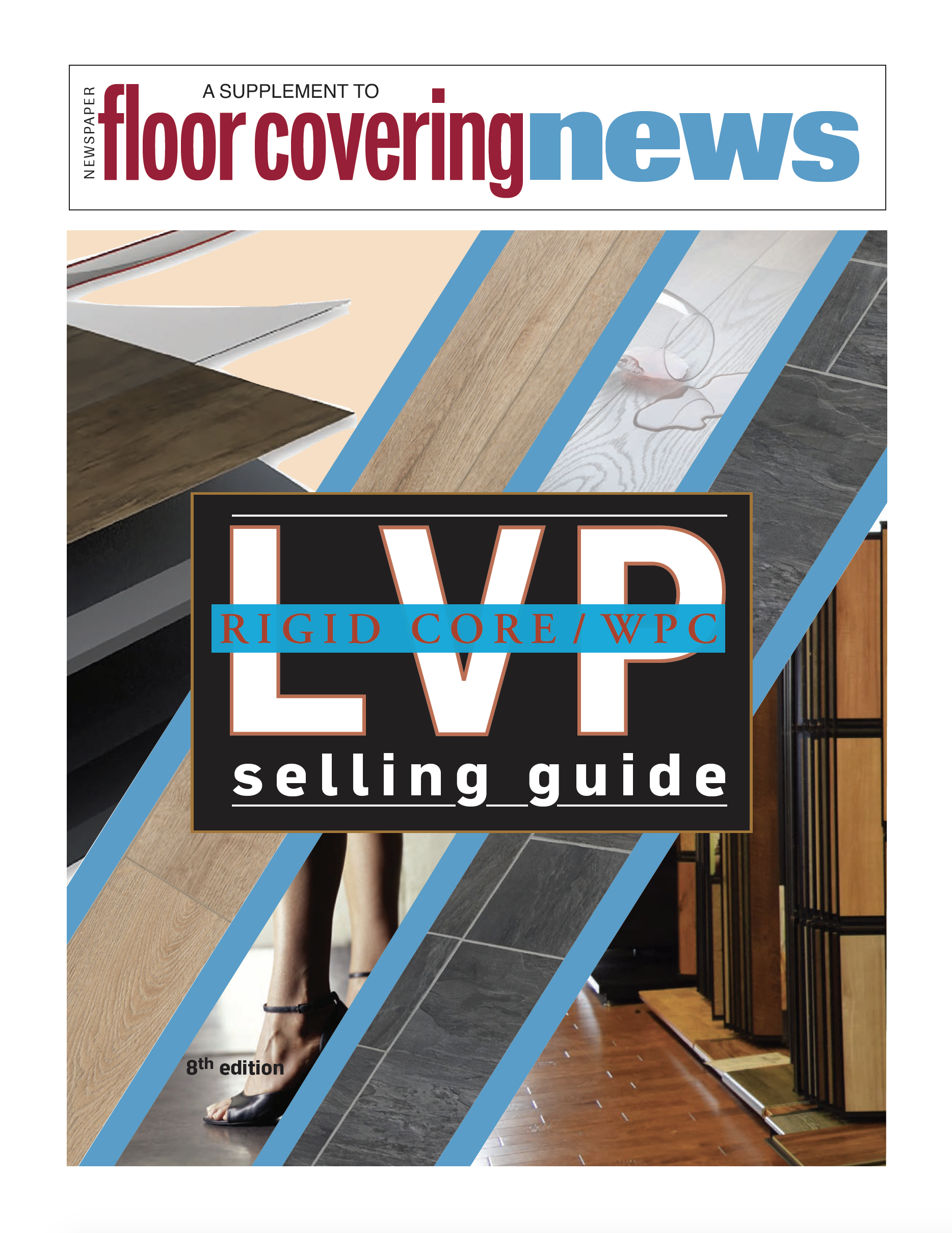 Intro to the 2021 LVP Selling Guide: Fourteen years ago, Floor Covering News published its first educational supplement, the Retailer Guide to Hardwood Flooring, to great acclaim. Floor covering dealers across the country continued to request copies long after the publication hit the streets, citing the guide as an optimal training tool for new salespeople as well as a refresher for existing sales associates.
Intro to the 2021 LVP Selling Guide: Fourteen years ago, Floor Covering News published its first educational supplement, the Retailer Guide to Hardwood Flooring, to great acclaim. Floor covering dealers across the country continued to request copies long after the publication hit the streets, citing the guide as an optimal training tool for new salespeople as well as a refresher for existing sales associates.
Every year since, FCNews has added to its Educational Guide franchise, publishing one for laminate flooring and then ceramic tile and resilient flooring while updating each every other year. We have also published several environmental guides.
With that as the backdrop, we are rolling out our eighth LVT/P Selling Guide, which has been expanded to include WPC and SPC categories.
This supplement to FCNews covers all the basics and then some, with articles on selling, merchandising, marketing, trends, installation, maintenance and technology, to name a few. All written by professionals in their respective fields of expertise.
Aside from the pieces written by contributors and FCNews staff members, the sponsors of this guide were given the opportunity to submit some educational articles of their own, as well as information on their respective companies that retail sales associates may find helpful when presenting to the consumer. It’s all about giving you the tools you need to help seal the deal.
Getting to know your LVPs
The category goes by many names: luxury vinyl plank (LVP), luxury vinyl flooring (LVF) and, historically, luxury vinyl tile. The common denominator is they all share some of the same performance and visual characteristics.
Arguably one of the more diverse flooring options available, LVP can take on several forms: stone (slate, travertine, marble, etc.) or wood. The ability to replicate real hardwood and stone using advanced photographic technologies is LVT/Ps foundation. One thing that distinguishes LVP from other types of vinyl flooring is the shape of individual pieces. LVT products are usually square, ranging in size from 12 x 12 to 24 x 24, but are now available in 12 x 24 rectangular and even hexagonal shapes. As well, because LVP often imitates wood flooring, it comes in standard plank shapes such as 3 x 36, 41⁄2 x 36, as well as an extra-long and wide 7 x 48 size and up.
Within the broader LVT segment are subcategories such as WPC (waterproof core) and SPC (solid polymer core.) WPC’s construction enables the best embossing and surface finishing, making for the most authentic looks. With WPC, you can clearly mimic a wood floor with stunning realism and create the thickness of a 1⁄2-inch plank without the challenges of weight in shipping and handling, proponents say. In addition, its features provide exceptional comfort, warmth and sound dampening.
SPC, by comparison, is an improved version of traditional vinyl flooring based on a rigid core platform. Generally stiffer and denser than WPC flooring, SPC is often specified for applications that require greater resistance to foot traffic, indentation and abuse from everyday accidents and mishaps. While this core is harder and less likely to indent, it can be more brittle and susceptible to edge breakage.
The latest advancement in SPC technology entails magnesium oxide cores. This core construction is touted as fireproof, dent proof as well as waterproof. Unlike traditional WPC and SPC, this core is not extruded but is created using a mold. These cores tend to be much denser than WPC but weigh less than their SPC counterparts.
With all the different options available to the consumer, it’s imperative that the flooring manufacturing community work together with its retail partners to educate customers on the ever-changing landscape of resilient flooring.
Learn more in the FCNews print edition of the 2021 LVP Selling Guide.

